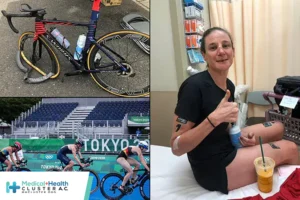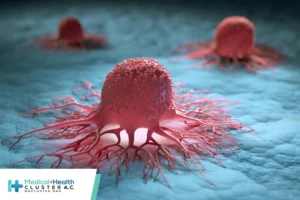Tras haber chocado su bicicleta contra una barrera, Katie Zaferes...
Leer más
Clinical management of COVID-19: Living guideline, 15 September 2022

The WHO COVID-19 Clinical management: living guidance contains the Organization’s most up-to-date recommendations for the clinical management of people with COVID-19. Providing guidance that is comprehensive and holistic for the optimal care of COVID-19 patients throughout their entire illness is important. The latest version of this living guideline is available in pdf format (via the ‘Download’ button) and via an online platform, and is updated regularly as new evidence emerges. No further updates to the previous existing recommendations were made in this latest version.
This updated (fifth) version contains 16 new recommendations for the rehabilitation of adults with post COVID-19 condition (see Chapter 24), which includes:
- strong recommendation that exertional desaturation and cardiac impairment following COVID-19 should be ruled out and managed before consideration of physical exercise training; and
- conditional recommendations for
– support for the delivery of rehabilitation services;
– early referral for appropriate rehabilitation services;
– rehabilitation service delivery using a hybrid approach of in-person and remote models which are integrated across all levels of health care;
– a rehabilitation workforce that includes physiotherapists, occupational therapists, nurses, psychologists, speech and language therapists, physicians, social workers, and (based on local needs) community health care workers;
– use of education and skills training on energy conservation techniques, such as pacing approaches, for the clinical rehabilitation management of post-exertional symptom exacerbation (PESE);
– use of a combination of pain education, skills training on self-management strategies, prescription of short-term anti-inflammatory drugs and, in the absence of PESE, physical exercise training for the clinical rehabilitation management of arthralgia;
– use of a combination of education and skills training on self-management strategies, such as nasal breathing and pacing approaches and, in the absence of PESE, physical exercise training for the clinical rehabilitation management of breathing impairment;
– use of a combination of education, skills training on self-management strategies and cognitive exercises for the clinical rehabilitation management of cognitive impairment;
– use of a combination of education, skills training on energy conservation techniques such as pacing approaches and, in the absence of PESE, a cautious return to symptom titrated physical exercise training for the clinical rehabilitation management of fatigue;
– use of psychological support and, in the absence of PESE, physical exercise training, mindfulness-based approaches and peer support groups for the clinical rehabilitation management of anxiety and depression;
– use of education and skills training for olfactory training for the clinical rehabilitation management of olfactory impairment;
– use of a combination of education and skills training on self-management strategies and, in the absence of PESE, physical exercise training for the clinical rehabilitation management of orthostatic intolerance. Environmental modifications may be useful to support activities of daily living for people experiencing difficulties with upright positions or standing.
– use of a combination of education and skills training on positioning, maneuvers and dietary modifications, and swallowing exercises for the clinical rehabilitation management of swallowing impairment;
– use of education and skills training about voice rest and vocal behaviours for the clinical rehabilitation management of voice impairment;
– rehabilitation interventions for a return to everyday activities that could include education and skills training on energy conservation techniques, the provision and training in the use of assistive products to those who need further assistance with activity management and mobility, and a return-to-work action plan that supports a prolonged and flexible phased return. Environmental modifications at work may be needed based on an individualized workplace risk assessment of personal capabilities matched to work requirements.
Guidelines regarding the use of drugs to treat COVID-19 are included in a separate WHO document, Therapeutics and COVID-19: living guideline, that can via an online platform and in pdf format (or click ‘PDF’ in top right corner of online platform).
Guidelines regarding the use of drugs to prevent COVID-19 are included in a separate document, WHO Living guideline: Drugs to prevent COVID-19, that can be accessed via an online platform and in pdf format (or click ‘PDF’ in top right corner of online platform).
To view previous (now outdated) versions of this guideline, please see the links below:
- First version, published 27 May 2020 (accessible as pdf only), was originally published under the title “Clinical management of COVID-19: interim guidance, 27 May 2020”.
- Second version, published 25 January 2021 (access via an online platform or as pdf).
- Third version, published 23 November 202 (access via an online platform or as a pdf)
- Fourth version, published 23 June 2022 (access via an online platform or as a pdf)
Créditos: Comité científico Covid.




